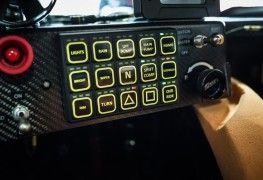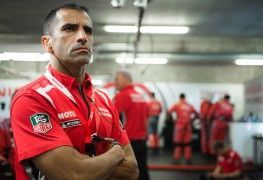Today we take a look at the history of the GT-R, from its origin until 1993.
As we told you in the second installment of this special, Nissan started in racing with Datsun, and later converged with the sporting history of Prince, the firm acquired in 1966. From it, it kept two product lines, the Gloria and the Skyline. This second sedan had already made his sporting dabbling in the Japanese Grand Prix, as we told you, both in 1964 and 1965, creating the Skyline 2000 GT S54.
After passing into the hands of Nissan, and after completing several sporting successes with the R380 series and its successors, Nissan decided in 1969 to launch a really serious sports variant of the Skyline, applying in it all the sporting knowledge learned with the prototypes of the R series.
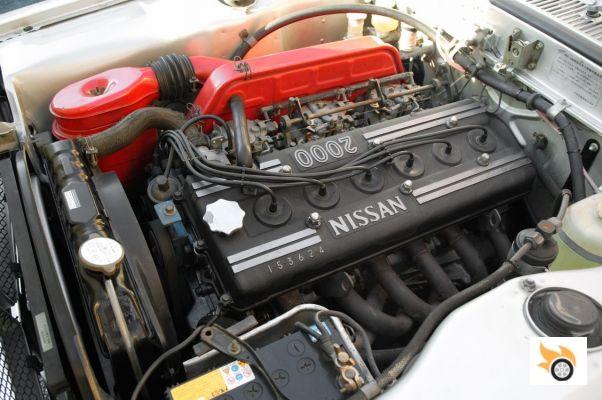
"Nissan S20 engine 002" by Tennen-Gas - Own work. Licensed under CC BY-SA 3.0 via Wikimedia Commons.
The most important differentiating factor is that Nissan dared to mount a derivative of the racing engine created for the R380. If you remember, the R380's racing engine was a block inspired by the Prince Gloria's G7, with six cylinders, but it didn't share a single component. It was called the GR8, had an inline six, four valves per cylinder, twin overhead camshafts, short stroke, and made 200 horsepower, with a cast-steel block and an aluminum cylinder head.
From that GR8 Nissan created the S20, an engine very similar to the racing engine, which retained the double overhead camshaft and four valves per cylinder, with the same combustion chamber design and the same light alloy cylinder head. Originally powered by three Weber twin-body carburettors, the S20 made 160 horsepower. In addition, shortly after coming to market, it would receive Lucas mechanical injection.
Taking this new S20 engine, it was installed in the C10 body of the 1969 Skyline four-door, creating a sedan with an excellent weight distribution between axles, 1,120 kilos to haul and a delightful tuning.
Confident in the sporting possibilities of this sports sedan, Nissan entered it for the JAF Grand Prix at the Fuji circuit a few months after it was unveiled, where it won a comfortable victory. From then on, for two years and ten months, every major circuit race in Japan where manufacturers met was won by the Skyline GT-R unopposed.
The car improved rapidly, incorporating before the end of 1969 the mechanical injection system that we have mentioned above, and evolving to more than 230 horsepower available at its rear wheels. For 1970 the coupé body was also launched, with a slightly shorter wheelbase, which improved agility for short circuits.
In total, out of fifty races, the Skyline GT-R (coupe and sedan) would win all fifty until the Mazda RX-3 managed to beat them in 1972, creating one of Japan's most memorable sports stories. In one fell swoop, Nissan had a car in its dealerships that every enthusiast wanted and admired. The company's sporting reputation was cemented.
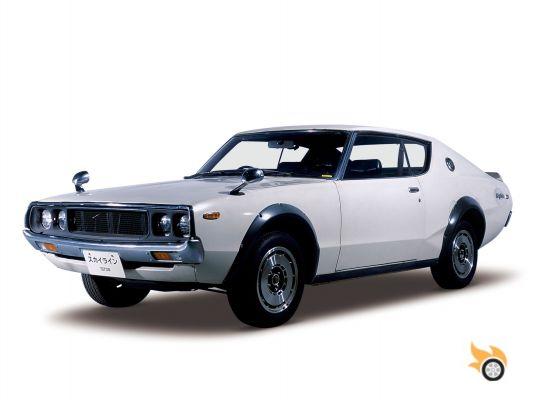
Only 197 units of the KPG110 GT-R were produced.
After considerable commercial success, in September 1972 Nissan decided to update the model and took advantage of the new generation Skyline to do so. Using the KPGC110 chassis, the new GT-R coupe used the same S20 engine, with the same official power of 160 horsepower. With a better chassis, more modern, and such a good engine, Nissan hoped to continue breaking sales records and sporting success, but the oil crisis hit hard, and the Japanese government introduced new measures in terms of emission control.
After making only 197 units, Nissan had to stop production of the GT-R, and the name was put on hold for 16 years no less.
It was then, in 1989, when Nissan decided to dust off the GT-R name for its Skyline, with the intention of returning it to the same glory it had had in the past, creating a car capable of beating all the competition.
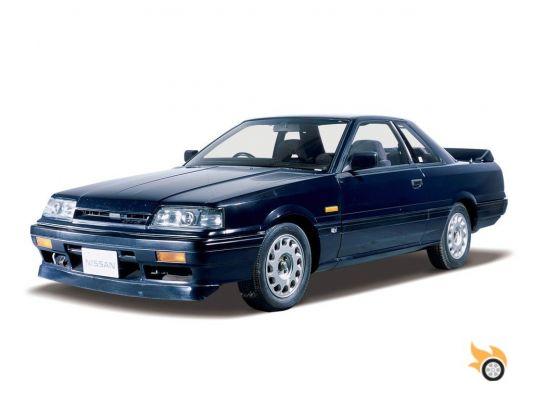
The GTS-R won the Japanese Touring Car Championship in 1989, but was not sufficiently competitive or appreciated by customers.
Nissan had been racing the Skyline GTS-R in 1987 in the Japanese circuit championship, governed by FIA Group A regulations. To homologate the race car, it created an 800-unit limited edition of its road car, which received a six-cylinder, two-liter engine, the RB20DET-R, with 210 peak horsepower and conventional rear-wheel drive. But the coupe wasn't capable enough to dominate the championship.
So when the R32 generation Skyline was released in 1989, Nissan set about developing a car that would bring together all of its technological capabilities in order to have an unbeatable machine under Group A rules. In other words, a racing machine homologated for the street, as BMW did with its M3 in Germany, to cite an example closer geographically.
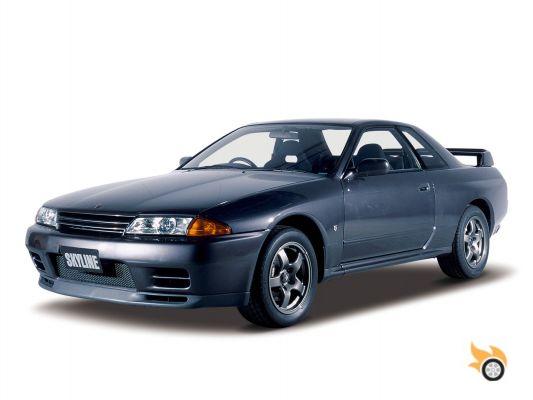
Nissan crammed all the technology it had in its know-how into the GT-R R32 to create a Group A dominating machine.
The GT-R R32, unlike its western counterparts, incorporated much, much more technology. In 1989 Nissan was able to fit a 2.6-litre six-cylinder (the now legendary RB26DETT) with twin turbochargers and "280 horsepower". The reality is that the engine was designed to deliver 500 (yes, five hundred) horsepower with the standard components, but then it was "capped" by the exhaust system, the electronic control unit and a physical control of the turbocharger wastegate, to leave it at the "official" power allowed in Japan by an unwritten law between manufacturers.
When the customer bought the car, it was enough to remove a small yellow piece clearly indentifiable to be able to count already with 310 horses in the four wheels.
And I say four, because the GT-R had intelligent all-wheel drive. Inspired by the Porsche 959, and because of the limited tire size available for the displacement category in which it would be framed, the chief engineer of the project, Naganori Ito, opted for a car that sent all its torque to the rear wheels, but when they began to have traction problems, an advanced (for the time) electronic system began to transfer up to half of the torque to the front axle through an intelligent center differential.
That wasn't the only innovation in the GT-R, which also featured active four-wheel steering, with a rear axle also governed by electronics, to improve slow cornering agility and fast cornering stability.
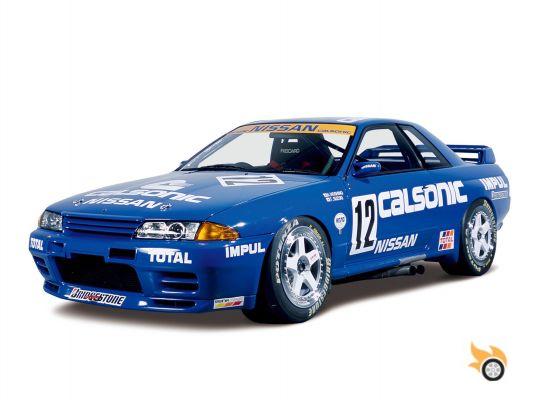
The GT-R R32 won all 29 Japanese Touring Car Championship races it contested before organisers changed the regulations to cut its overwhelming dominance.
The base chassis of the Skyline R32 received aluminum front wings and hood to take weight off the front axle, while the wheel arches were cambered to allow a wider track, and aerodynamics were taken care of in detail. The end result was a beast that, as soon as it set foot on the circuits, began to frighten people.
Its first task, to demonstrate its capabilities, was to be timed on the Nordschleife at the Nürburgring. At that time, the best time on the German track for a production car was set by the Porsche 944 Turbo, with an 8:45 that would be beaten by the 8:20 that Nissan was able to achieve "with the production car".
It was just a foretaste of what was to come. Japan had gone from its "super silhouette" championship, where Nissan had had dominators, to a championship governed by Group A rules in 1985, and where European machines like the Ford Sierra Cosworth dominated at will... In 1989, the GTS-R R31 was able to steal victory from the foreign machinery, but just barely, but in 1990 the GT-R R32 landed in the championship and... and killed it.
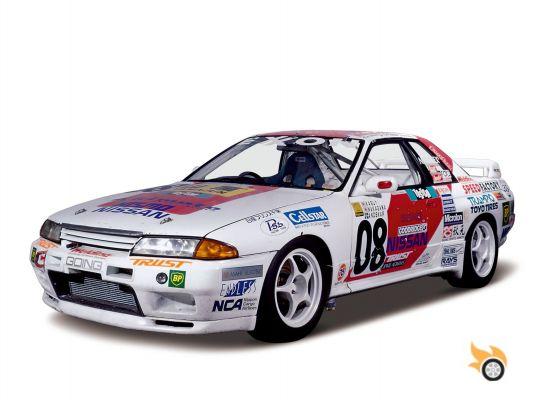
The R32 would also shine in endurance races such as the 24 Hours of Spa, or the Australian Bathurst 1000.
The GT-R R32 won every race it contested consecutively between 1990 and 1993. After four seasons of absolute dominance, the organizers of the championship decided to change the format to what is now the SuperGT prototypes, with the idea of allowing racing with cars not derived from the series, to the subjugation of the GT-R in its category. 29 wins out of a possible 29, not bad, is it?
The R32 would not be an absolute dominator only in its home country. Every foreign outing ended with another domination and claims for rule changes. His departure to Australia to compete in their touring car championship, and in particular the respected and demanding Bathurst 1000 resulted in victories in 1991 and 1992 which ended in a rule change to weigh the Nissan down with more weight and less turbo pressure to allow other entrants to win.
At the 24 Hours of Spa Francorchamps, the GT-R R32 would also find success first in Group N and then in Group A, a similar fate to that which would befall it at Macau, where after dominating in 1990 it also received a "special" ballast just to prevent it from dominating the competition.
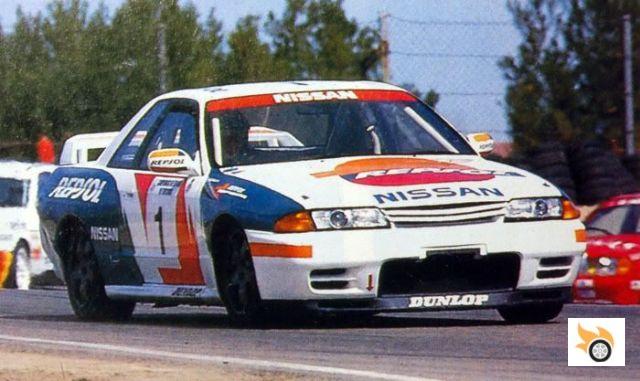
GT-R R32 wins Spanish Touring Car Championship
The successes of the GT-R R32 knew no borders, and by imposing itself, it was imposed even in Spain, where it took the touring car championship in 1992.
And it was partly its sporting success and the inability of rival marques to offer an equivalent and competitive production car, which eventually led to the abandonment of Group A in the mid-nineties as a racing category in the circuit, in favour of formulas that allowed racing cars less akin to street cars.
That's what made the GT-R R32 great, the fact that it was a mainstream race car, but one that anyone could buy from a dealer. It was an incredible machine available to anyone... anyone who could afford the price, which was well below European sports car prices in Japan anyway. Because this GT-R would not officially come to the West.
The return of Alfa Romeo: from the 1900 to the Giulia

